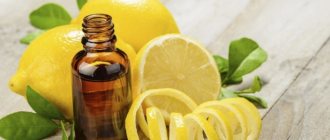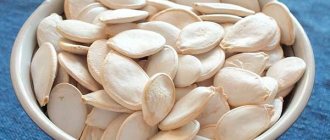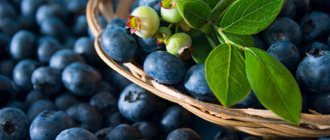Garlic has been used medicinally for 3,000 years. Its use has been documented by many major civilizations, including the Egyptians, Babylonians, Greeks, Romans and Chinese.
Modern science has confirmed many of the health benefits of garlic known since ancient times. At the moment, the following positive effects on the human body have been proven: prevention of cancer and atherosclerosis, lowering blood pressure, improving the condition of bones and liver function, preventing “age-related” diseases of the brain.
TOP 15 beneficial properties of garlic
- Helps with colds. Grate a few cloves of garlic on a fine grater, add a spoonful of honey to the resulting paste and take a teaspoon of this remedy several times a day. For colds, another remedy that is prepared on the basis of garlic helps. Pour several crushed cloves (ten pieces per liter of water) into water. Allow the product to brew for two weeks, then strain it thoroughly. You should take 35-40 drops of this garlic tincture daily.
- Relieves runny nose. If you have a bad runny nose, wrap small pieces of garlic cloves in gauze and place them in each nostril for a quarter of an hour.
- Serves as a general strengthening, anti-sclerotic agent. Wash, peel three hundred grams of garlic, place in an empty bottle and fill with alcohol. Infuse in a dark place for three weeks. Take daily orally in the following form: twenty drops of tincture in half a glass of sour milk or whey.
- Has a rejuvenating effect. To prepare the garlic elixir of youth, take three hundred and fifty grams of garlic, peel it and grind it in a meat grinder, then mix it with juice squeezed from twenty-four lemons. The resulting mixture is placed in a jar with a wide neck, tied with gauze and left for 24 hours. Shake the product before use. Mix a teaspoon of the mixture with half a glass of water and take this mixture daily before bed.
- It alleviates the condition during exacerbations of rheumatism, and helps improve the condition of arthritis. Garlic contains large amounts of sulfur. It is the presence of various sulfur-containing substances in this vegetable, for example, allicin, that causes its special, pungent odor. Sulfur promotes the synthesis of methionine, an amino acid that is a powerful hepaprotector, and also normalizes the condition of cartilage in the joints. Therefore, people with arthritis are advised to eat more garlic.
- Helps with heart attack, stroke and hypertension, and is also used for their prevention. To do this, you should make a garlic tincture: chop forty grams of garlic, pour vodka (100 g) over them and leave to infuse in the dark and cool for ten days. Take ten drops before meals twice a day.
- Relieves cough. For bronchial asthma or colds, use garlic ointment, which is rubbed on the chest and back. To prepare the ointment, crushed garlic is mixed in a 1:1 ratio with lard or butter.
- Helps with angina pectoris. To treat angina pectoris, use the following composition. Chop five heads of garlic, mix them with the juice of ten lemons and one kilogram of liquid honey, then mix everything thoroughly. After preparation, the resulting product should be infused in a dark place in a sealed container for a couple of weeks. You need to consume it 4 teaspoons once a day, taking a minute break between taking each spoon.
- Allows you to get rid of old purulent wounds, scaly lichen and warts. Garlic juice or crushed pulp is applied to the problem area for a few minutes. The procedure is repeated twice or thrice a day. When applied to an abscess, the swelling may initially increase, but soon the abscess will burst and all the pus that has accumulated in it will be released.
- Eliminates toothache. You can get rid of the discomfort of toothache by applying a cut clove of garlic to your wrist, located on the side opposite to the painful tooth. If toothache is felt on the left, the slice should be applied to the right wrist, and vice versa. To prevent a burn from forming on your wrist, place one or two layers of gauze between the skin of your hand and the cut of the clove.
- Helps cope with sore throat. To do this, you need to gargle with garlic infusion. To do this, finely chop a clove of garlic, pour a glass of boiled warm water, leave for one hour, filter, and then use it for rinsing.
- Normalizes the condition of the cardiovascular system. The healing properties of garlic ensure a decrease in the level of bad cholesterol in the blood. Garlic tincture, prepared according to the following recipe, is useful for vascular health. Three hundred grams of peeled garlic are placed in a bottle (0.5 l), the garlic is filled with vodka or medical alcohol. Infuse for 3 weeks in a dark place. Take twenty drops daily, diluted in warm milk (100 g). The use of this garlic tincture helps to cleanse the stomach, lower blood pressure, and relieve spasms of cerebral vessels.
- Helps get rid of parasites. With the help of this plant you can quickly get rid of helminths. To do this, you need to grind a couple of cloves of garlic and pour warm milk (0.5 l) over them. This remedy should be used as an enema.
- Helps cleanse the body. To do a complete cleaning, you need to do the following:
- Peel and chop 400 grams of garlic.
Pour the resulting mass with 300 g of liquid honey. It is desirable that the honey be natural, from May.
- Place the mixture in a jar, which must be closed in a jar and placed in a dark place for a week.
- After a week, you can start taking the product before meals, three times a day. The duration of the cleansing course is fifty days.
- Helps relieve itching from insect bites. Rub the area where you were stung by a bee, wasp, mosquito or other insect with a cut clove of garlic.
Beneficial substances contained in garlic
Garlic contains more than four hundred different beneficial elements that provide the healing effects of this plant on the human body. It contains elements such as calcium, potassium, selenium, zinc, magnesium, sodium, mineral salts, vitamins C and B, phytoncides, extractives, essential oils and other healthy components. In addition, it contains valuable protein, which helps the body produce antibodies that resist the negative effects of the external environment, as well as selenium, known for its antioxidant properties.
Thanks to its unique composition, rich in nutrients, garlic has the following properties:
- diuretics;
- anti-inflammatory;
- sweatshops;
- disinfectants;
- general strengthening;
- wound healing;
- antitoxic, anthelmintic;
- antimicrobial;
- antioxidant;
- painkillers.
Garlic has the ability to lower cholesterol, thin the blood, lower blood pressure, and have an anti-inflammatory effect. It actively counteracts cerebral spasms, as well as clogging of the main and peripheral arteries. This vegetable is especially useful for vitamin deficiencies and colds.
Garlic is a natural antibiotic. It effectively strengthens the immune system, increasing the body's ability to resist the negative influences of the external environment. Garlic destroys a huge number of different bacteria. It is added to various medications. Products prepared on its basis are even used to destroy malignant tumors. However, keep in mind that with prolonged use, medications made from garlic can begin to suppress the intestinal microflora, thereby causing irritation.
If you do not want to eat garlic because of its pungent odor, we advise you to chew a sprig of parsley or a slice of lemon afterward. You can also chew cinnamon or cardamom seeds or rinse your mouth with milk.
The nutritional value
Garlic is a rich source of sulfur compounds, ascorbic acid, vitamin B6, selenium, manganese and other elements important for health [6].
Table of content of useful components in 100 g of product
| Calorie content | 203 kcal |
| Squirrels | 8.6 g |
| Carbohydrates | 45 g |
| Fats | 0.7 g |
| Ash | 2 g |
| Cellulose | 2.9 g |
| Vitamin A | 12 IU |
| Vitamin C | 42.4 mg |
| Vitamin E | 0.1 mg |
| Vitamin K | 2.3 mcg |
| Thiamine | 0.3 mg |
| Riboflavin | 0.1 mg |
| Niacin | 1 mg |
| Vitamin B6 | 1.7 mg |
| Folic acid | 4.1 mcg |
| Pantothenic acid | 0.8 mg |
| Kholin | 31.6 mg |
| Calcium | 246 mg |
| Iron | 2.3 mg |
| Magnesium | 34 mg |
| Phosphorus | 208 mg |
| Potassium | 545 mg |
| Sodium | 23.1 mg |
| Zinc | 1.6 mg |
| Copper | 0.4 mg |
| Manganese | 2.3 mg |
| Selenium | 19.3 mcg |
The mechanism of action of garlic on the body
The secret of the healing effects of garlic on the human body was revealed by Israeli scientist David Mirelman. The scientist explained the therapeutic effect it provides by the presence of allicin in the vegetable, a special substance that effectively destroys pathogenic microbes. This leads to the complete neutralization of “free molecules”, which are sources of chronic infection.
Allicin is a special chemical compound that is formed as a result of the mechanical destruction of garlic cells. Allicin is a powerful antioxidant that has a bactericidal effect. The presence of allicin explains the pungent taste of garlic. However, this substance is very fragile; it quickly breaks down, especially during heat treatment of products. Therefore, garlic is best eaten fresh rather than included in various dishes.
How to use it correctly for health
To achieve a therapeutic effect, you need to consume two or three heads of garlic daily and always on an empty stomach. If you decide to get rid of a specific disease using tinctures based on garlic cloves, then you should adhere to the method of use in accordance with the recommendations of your doctor.
What are the contraindications?
It is not recommended to use garlic for the following diseases:
- ulcer of the duodenum and stomach;
- liver diseases;
- gastritis, characterized by high acidity;
- kidney diseases;
- pancreatic diseases;
- anemia.
It is also not recommended to consume a lot of garlic during pregnancy and breastfeeding. It is not recommended for healthy people to get too carried away with garlic, since too much of it can cause irritation of the skin, vascular spasms, and upset the balance of intestinal microflora.
Safety, possible harm
Despite all the benefits, in some cases, using garlic can be harmful to health. The plant should not be used if the following contraindications exist:
- Obesity. Garlic is a powerful stimulant of the hunger center. Within 1-3 hours from the moment of consuming garlic, appetite increases significantly, which is fraught with excessive calorie consumption and an increase in body weight due to fat deposits.
- Exacerbations of chronic or acute inflammatory diseases of the gastrointestinal tract. In the presence of active inflammation of the intestinal wall (gastritis, duodenitis, enteritis, colitis, peptic ulcer of the stomach and duodenum), garlic causes additional irritation and can aggravate the course of pathologies or cause complications (bleeding, penetration or perforation of the walls of the digestive apparatus).
- Biliary dyskinesia of the hypermotor type. The plant increases muscle tone and increases the severity of symptoms.
- Any kidney pathologies with signs of CKD. Garlic can provoke functional disorders of the kidney filter and cause a critical increase in urea and creatinine in the blood.
- Allergic reactions. Allergy to garlic is extremely rare and usually manifests itself in a mild form (urticaria, allergic dermatitis).
The obvious disadvantage of eating garlic is bad breath, which can be eliminated by eating garlic at the same time as:
- drinking a cup of strong coffee without milk;
- chewing a slice of lemon or a sprig of parsley;
- drinking milk with cinnamon or cardamom;
- drinking green tea with the addition of anise, myrrh or rosemary.
Use during pregnancy
On the one hand, garlic increases immunity (protecting the fetus and organs of the woman’s reproductive system from infectious and inflammatory diseases), improves uteroplacental blood flow, provides the body of the unborn child with a number of important vitamins and microelements, on the other hand, it can provoke premature onset of labor or miscarriage.
Therefore, garlic can be taken by pregnant women only in the first trimester. The recommended maximum daily dose is 1-2 cloves per day.
Garlic has contraindications and side effects that should be taken into account to avoid complications.
History of the use of garlic to treat diseases
The healing properties of this plant were known in ancient times. In ancient Egypt, garlic was part of the diet of workers involved in the construction of the Egyptian pyramids, who consumed it to increase endurance and strength. This plant was used for medicinal purposes in Ancient India, as well as in other ancient states. Caesar's legionaries took garlic with them on military campaigns - this is how it got to England, and then to other European countries. In the Middle Ages, garlic was used to treat wounds, stomach diseases, leprosy, and was also used for poisoning as an antidote.
This vegetable came to Russia from Byzantium. Russian healers were convinced that it helped cure a huge number of diseases, including the plague. They even used it as an antidote for snake bites.











